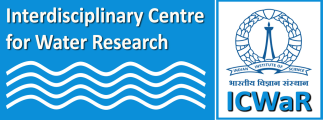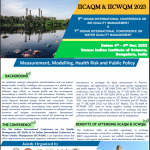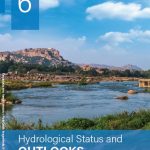Can Spectrally Transformed CMIP6 Decadal Projections Improve Interannual Rainfall Forecasts?
Name of the Speaker: Prof. Ashish Sharma
Title of the Seminar: Can Spectrally Transformed CMIP6 Decadal Projections Improve Interannual Rainfall Forecasts?
Date and Time: 08th April 2024 (Monday), 04:00 pm
Online Platform: MS Teams (link to the video of the seminar)
About the Speaker: Ashish is a Professor of Civil and Environmental Engineering at the University of New South Wales, Sydney, Australia. He is an engineering hydrologist interested in problems involving hydrological uncertainty. Much of his research has focused on the impact of climate change and variability on hydrological practice, along with applications related to remote sensing, formulating stochastic approaches, developing hydrological models, and the two big hydrology bread-and-butter problems- design flood estimation + water resources management. Ashish has served as the President of the IAHS Commission on Statistical Hydrology and continued to serve as the Editor-in-Chief of the Journal of Hydrology-X, newly transformed to offer “Letter” contributions of broad international and methodological interest.
Abstract: Can CMIP6 decadal projections be effective for multi-decadal water resources planning? This is the underlying question that motivates the present research, investigating what are the key deficiencies that limit their direct use for applications, and whether cleverly formulated mathematical alternatives can be used as effective postprocessors. This study focuses on the development of a robust framework for predicting droughts over interannual to decadal scales to enhance water resource management. The proposed framework adopts the Wavelet System Prediction (WASP) methodology, which transforms the spectral attributes inherent to climate indices to improve the skill of drought forecasts. Further improvement in forecasting capability is achieved through a Hierarchical Linear Combination (HLC) logic, which incorporates forecasts from ten climate indices that are obtained from CMIP6 decadal projections. These indices, including ENSO-related sea surface temperature anomalies and other climate drivers closely linked to Australian rainfall, are derived from decadal predictions of the Decadal Climate Prediction Project (DCPP). The results of projected drought indices across various scales in Australia demonstrate the substantial potential of the integrated HLC-WASP framework to significantly improve the forecast skills of medium to long-term drought scenarios.
It must be noted that the underpinning reason for the improvement here is not an enhancement of the dynamical forecasts, but a spectral modulation of their future simulations to define a new set of climate indices that are “optimal” for use in a forecasting context. In other words, wherever empirical forecasts are needed, the spectral transformation used here will redefine system predictors to maximize forecast quality to the extent that is mathematically possible.
Date/Time
Date(s) - 08/04/2024
4:00 pm - 5:00 pm















